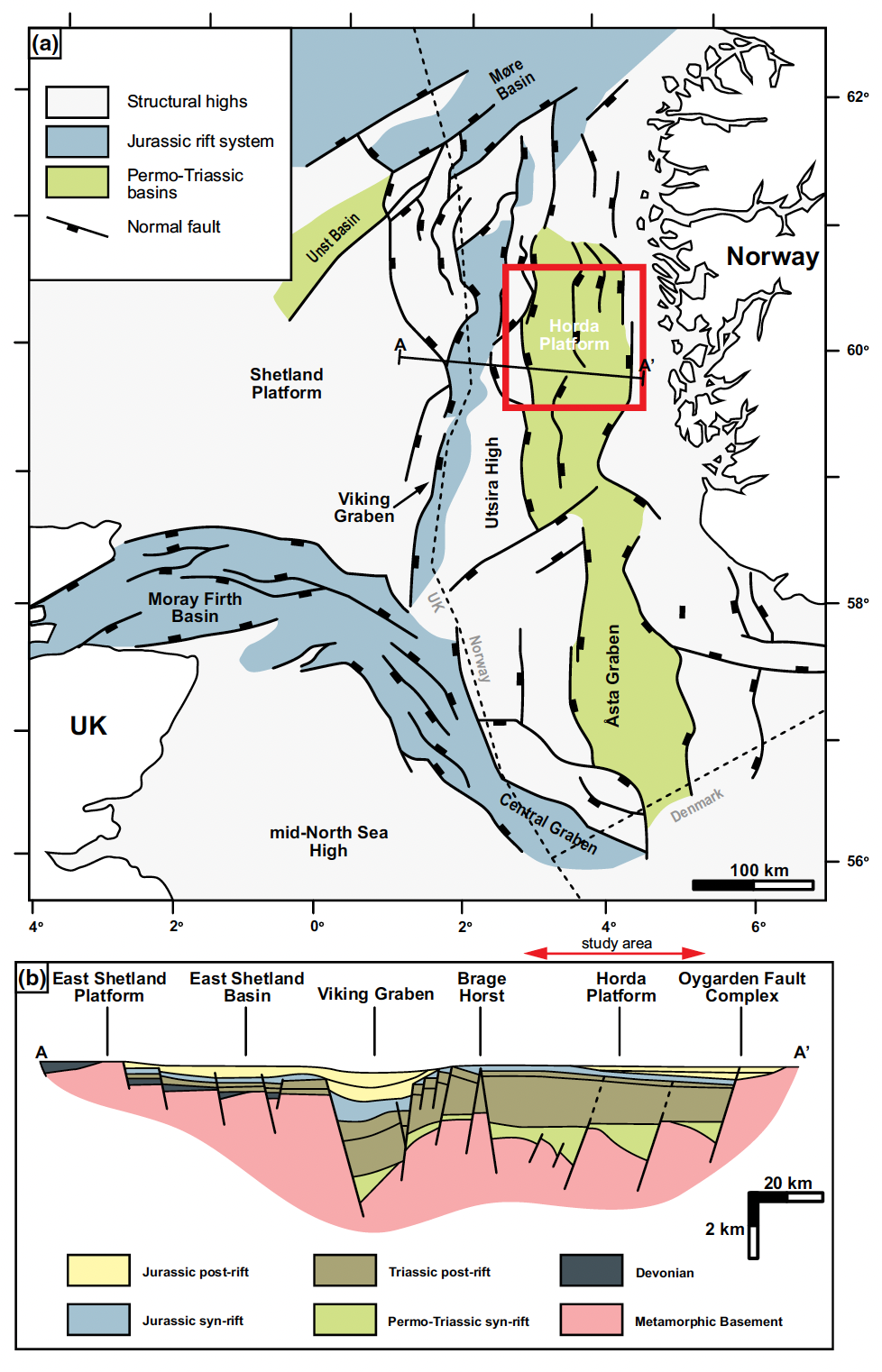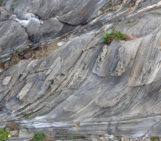
Cowie et al. (2005) is an exciting “must-read” for any geologist interested in rift systems. It examines strain accumulation and extension within a rift basin and scrutinizes model predictions with field observations. The authors highlight two sets of models, the first set of models uses brittle deformation to explain extension (e.g., King et al., 1988; Kusznir et al., 1991; Ter Voorde et al., 1997; Voorde et al., 2000; Weissel and Karner, 1989) whereas the second set of models are focused on ductile deformation and their role in rift extension (e.g., England, 1983; Newman and White, 1999; Sonder and England, 1989; Zuber and Parmentier, 1986). The paper uses seismic data from the Viking Graben in the North Sea to analyze the proposition of each set of models and identify their limitations. Based on observations of fault displacement patterns, kinematic fault analysis, and geodynamic modeling, the authors show that flexural slip cannot adequately explain the increased throw of faults towards the rift axis. Instead, thermal variation within the subsurface is suggested as a main influence on the location of faults and their maximum throw.
In this paper, the authors highlighted some key findings. They observed that the strain distribution pattern from the basin margin, defined by the Hutton-Murchison Fault, to the basin axis, defined by the Gullfaks-Visund Fault, differs from those predicted by existing models. Flexural strength models use a constant effective elastic crust thickness (Te) to predict lateral variation on strain rate. In contrast, analyses of strain data from the Viking Graben show that Te is more than five times larger at the rift axis, where the maximum strain is observed. The flexural strength model that focuses on the brittle upper crust predicts that new faults would accommodate increasing strain, and could not explain the activity of antithetic faults, nor how the basin axis-bounding fault emerged with the largest displacement. Based on Newman and White (1999) the authors estimate that the extension in the low strain rate areas of the Viking Graben would last for 60 Myr, in contrast to the findings of Cowie et al. 2005 which estimate that extension only lasted for 25-30 Myr. Newman and White (1999) also predicted that the strain rate would increase in the rift axis from the inception of rifting to the end, but data from the Viking Graben presented by Cowie and colleagues show that strain was high in the rift axis during the first 10 Myr and later decreased towards the end of rifting.

Fig. 1, From Whipp et al., (2014), (a) Map showing the main structural elements of the northern North Sea Rift System. The red box indicates the location of the study area. (b) Schematic cross-section across the North Viking Graben. The location of the study area is indicated. Figure modified from Færseth (1996).
This paper by Cowie et al. (2005) has shaped the way we think about rift evolution and fault growth. It is an excellent example of combining observations and models to draw firm and useful conclusions relevant to a broader field of study. Examples of recent studies that were inspired by Cowie’s rift oeuvre include (but are by no means limited to) reviews of the Atlantic and South China Sea (Brune et al., 2017). We can also refer the reader to blogposts on other Must-Read papers by Patience Cowie, specifically Cowie (1998) and Cowie and Scholz (1992), as well as this interesting blog about her within the Influential Women of TS series.
Akinbobola Akintomide, Gino de Gelder, Utsav Mannu, and the TS Must Read Team
References
Brune, S., Heine, C., Clift, P. D., & Pérez-Gussinyé, M. (2017). Rifted margin architecture and crustal rheology: reviewing Iberia-Newfoundland, central South Atlantic, and South China Sea. Marine and Petroleum Geology, 79, 257-281.
England, P., 1983, Constraints on extension of continental lithosphere: Journal of Geophysical Research: Solid Earth, v. 88, no. B2, p. 1145-1152.
Fernández-Blanco, D., de Gelder, G., Lacassin, R., & Armijo, R. (2019). A new crustal fault formed the modern Corinth Rift. Earth-Science Reviews, 199, 102919.
King, G. C. P., Stein, R. S., and Rundle, J. B., 1988, The Growth of Geological Structures by Repeated Earthquakes 1. Conceptual Framework: Journal of Geophysical Research: Solid Earth, v. 93, no. B11, p. 13307-13318.
Kusznir, N. J., Marsden, G., and Egan, S. S., 1991, A flexural-cantilever simple-shear/pure-shear model of continental lithosphere extension: applications to the Jeanne d’Arc Basin, Grand Banks and Viking Graben, North Sea: Geological Society, London, Special Publications, v. 56, no. 1, p. 41-60.
Newman, R., and White, N., 1999, The dynamics of extensional sedimentary basins: constraints from subsidence inversion: Philosophical Transactions of the Royal Society of London. Series A: Mathematical, Physical and Engineering Sciences, v. 357, no. 1753, p. 805-834.
Sonder, L. J., and England, P. C., 1989, Effects of a temperature-dependent rheology on large-scale continental extension: Journal of Geophysical Research: Solid Earth, v. 94, no. B6, p. 7603-7619.
Ter Voorde, M., Ravnås, R., Færseth, R., and Cloetingh, S., 1997, Tectonic modelling of the Middle Jurassic synrift stratigraphy in the Oseberg–Brage area, northern Viking Graben: Basin Research, v. 9, no. 2, p. 133-150.
Voorde, M. T., Færseth, R. B., Gabrielsen, R. H., and Cloetingh, S. A. P. L., 2000, Repeated lithosphere extension in the northern Viking Graben: a coupled or a decoupled rheology?: Geological Society, London, Special Publications, v. 167, no. 1, p. 59-81.
Weissel, J. K., and Karner, G. D., 1989, Flexural uplift of rift flanks due to mechanical unloading of the lithosphere during extension: Journal of Geophysical Research: Solid Earth, v. 94, no. B10, p. 13919-13950.
Zuber, M. T., and Parmentier, E. M., 1986, Lithospheric necking: a dynamic model for rift morphology: Earth and Planetary Science Letters, v. 77, no. 3, p. 373-383.


